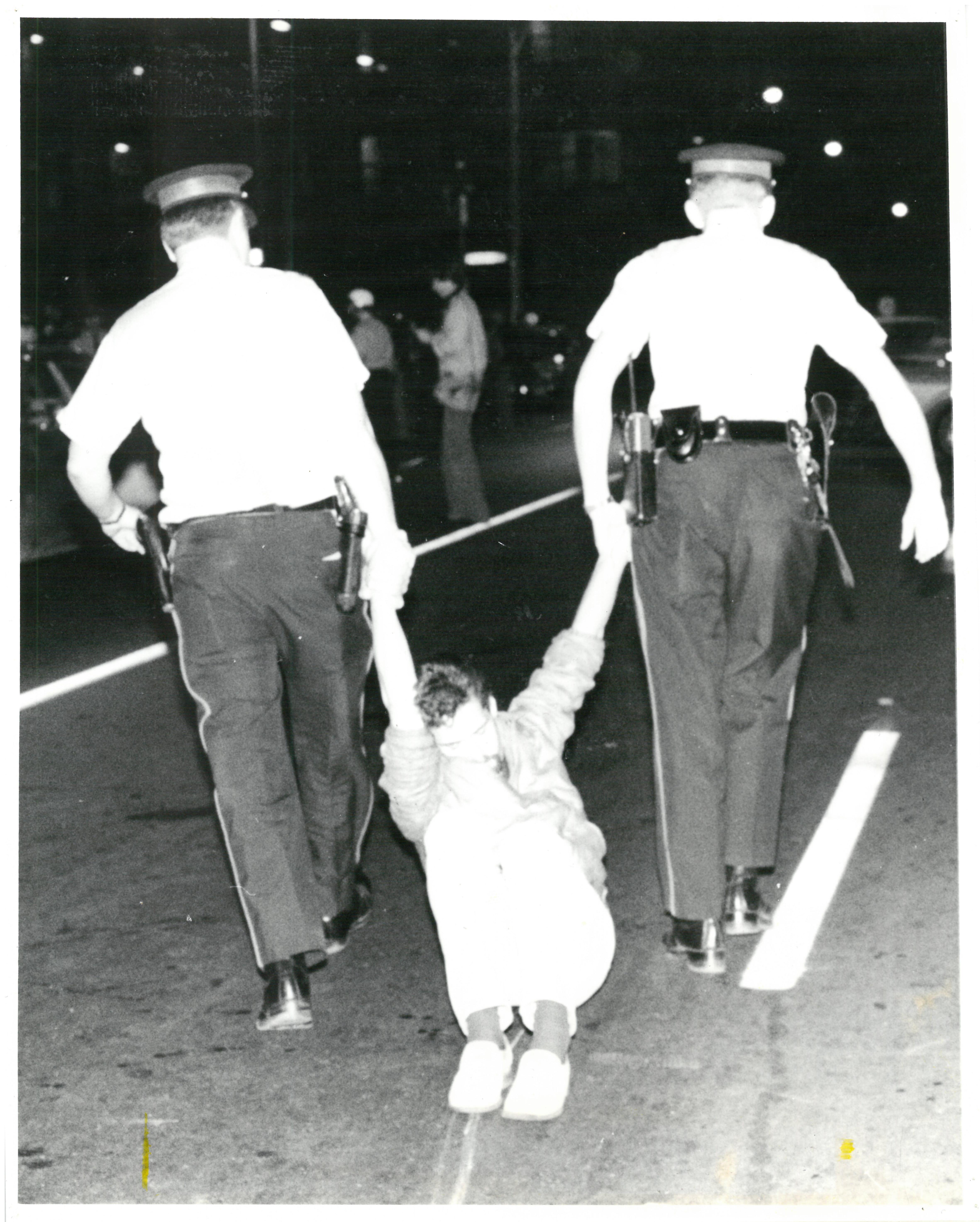
A demonstrator is arrested at protests against bathhouse raids in Toronto, June 1981.
The Arquives: Canada’s LGBTQ2+ Archives
Written by guest blogger Tom Hooper.
As a historian studying the Toronto bathhouse raids, one of my first research questions was about the criminal code reform in 1969. How could so many people be arrested in the decades that followed the ‘decriminalization’ of homosexuality in Canada? This special edition of the Canadian Historical Review provided an opportunity to explore the 1969 reform in greater detail.
What I found is that the law reform did not match any common definition of the term “decriminalization.” No laws were repealed, gay sex remained a criminal code offense, and the number of people who faced charges increased. This included the innovative use of the bawdy house law against gay bathhouses, but also the continued use of the very provisions that were reformed in 1969. In the weeks following the 1981 bath raids, the gay liberation newsmagazine The Body Politic printed the headline, “recriminalization?”
I resurrect this question in the hopes of revisiting the term “decriminalization.” Any celebration of reform must incorporate the ground-level interactions between LGBTQ2 people and police officers who were tasked with enforcing criminal law. When taking that perspective into account, 1969 did not represent a turning point toward equality and human rights. In addition to the community reaction to the reforms, I re-examined the debates in the House of Commons to search beyond the moral and medical rhetoric. I found members from all major political parties expressing their skepticism that the reform amounted to a decriminalization. Reactions in the media were similarly doubtful that the changes in law would have any practical effect.
Activists in the 1970s and beyond devoted much of their resources toward fighting the continued criminalization of LGBTQ2 communities. This includes the 1971 “We Demand” protest on Parliament Hill, in which activists called for an actual decriminalization with the full repeal of gross indecency and indecent acts. Branding the reforms as “decriminalization” is part of a deeper process of homonationalism, in which the struggles of queer people both before and after 1969 get erased. Progress in both legal and social transformation is not credited to these struggles. Instead, it is a celebration of Pierre Trudeau and the policies of the Liberal Party.
I am honoured to be joined in this special edition by other authors taking a critical perspective of Pierre Trudeau’s “Just Society.” Katrina Ackerman and Shannon Stettner examine the provisions in the criminal code regulating abortion, they argue these changes were so limited that it did not change women’s ability to access these services. Marcel Martel similarly argue that the Official Languages Act was not a turning point. Sarah Nickel examines the 1969 White Paper, which called for the destruction of indigenous sovereignty and treaty rights. The idea that these policies would end marginalization or promote equality represents a setter-oriented framework of justice.
Tom Hooper is a historian of the Toronto bathhouse raids. He is contract faculty in the Law and Society Program at York University. He has appeared before parliamentary committees in both the Senate and House of Commons on matters related to the criminalization of LGBTQ2 people in Canada. His article “Queering ’69: The Recriminalization of Homosexuality in Canada” is available free to read for a limited time on CHR Online.
Comments on this entry are closed.